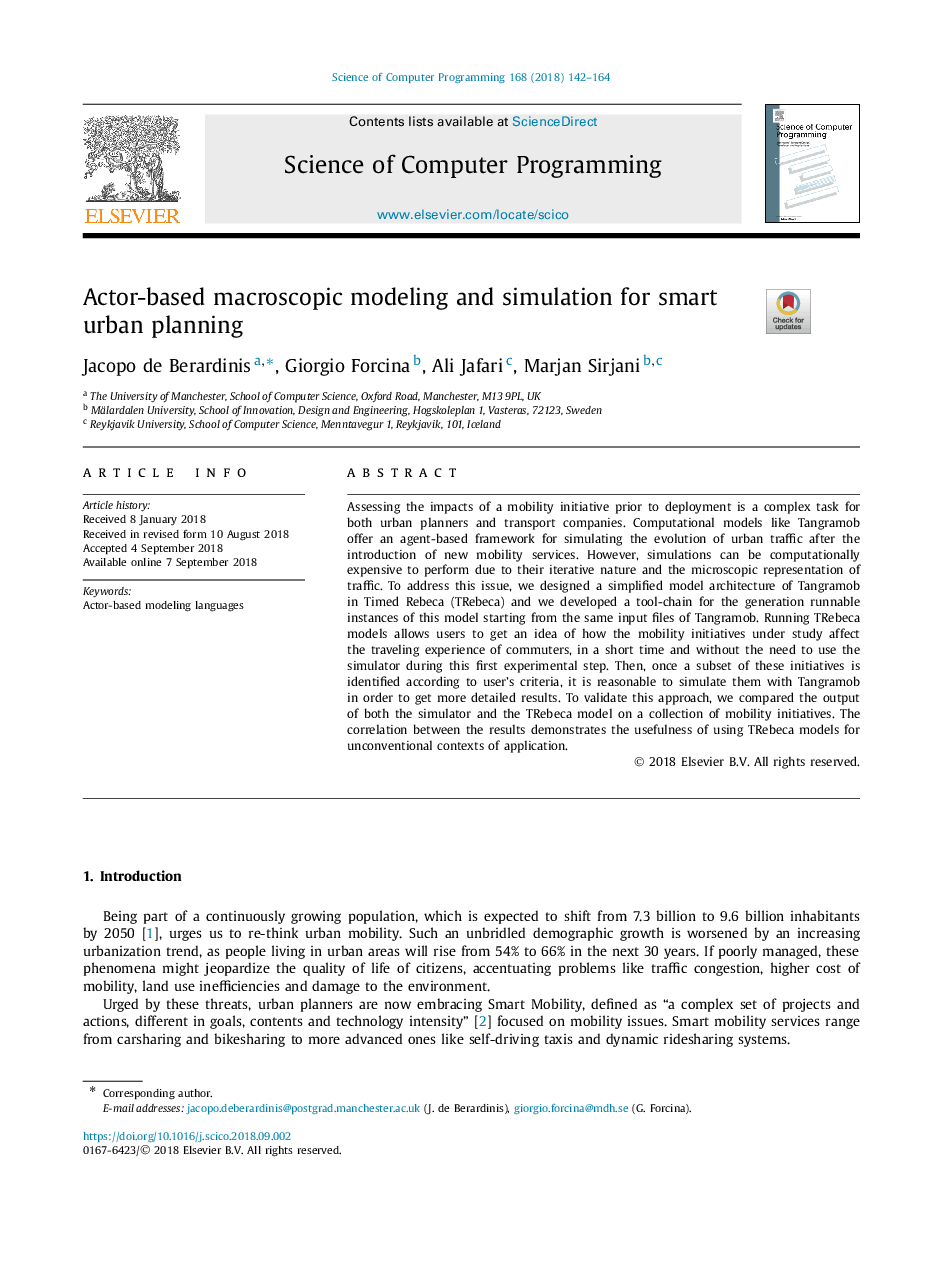| Article ID | Journal | Published Year | Pages | File Type |
|---|---|---|---|---|
| 10145994 | Science of Computer Programming | 2018 | 23 Pages |
Abstract
Assessing the impacts of a mobility initiative prior to deployment is a complex task for both urban planners and transport companies. Computational models like Tangramob offer an agent-based framework for simulating the evolution of urban traffic after the introduction of new mobility services. However, simulations can be computationally expensive to perform due to their iterative nature and the microscopic representation of traffic. To address this issue, we designed a simplified model architecture of Tangramob in Timed Rebeca (TRebeca) and we developed a tool-chain for the generation runnable instances of this model starting from the same input files of Tangramob. Running TRebeca models allows users to get an idea of how the mobility initiatives under study affect the traveling experience of commuters, in a short time and without the need to use the simulator during this first experimental step. Then, once a subset of these initiatives is identified according to user's criteria, it is reasonable to simulate them with Tangramob in order to get more detailed results. To validate this approach, we compared the output of both the simulator and the TRebeca model on a collection of mobility initiatives. The correlation between the results demonstrates the usefulness of using TRebeca models for unconventional contexts of application.
Related Topics
Physical Sciences and Engineering
Computer Science
Computational Theory and Mathematics
Authors
Jacopo de Berardinis, Giorgio Forcina, Ali Jafari, Marjan Sirjani,
